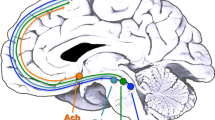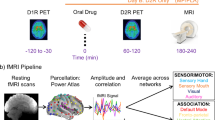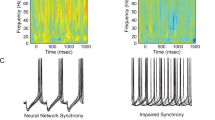Abstract
Dopamine D1 agonists enhance cognition, but the role of different signaling pathways (e.g., cAMP or β-arrestin) is unclear. The current study compared 2-methyldihydrexidine and CY208,243, drugs with different degrees of both D1 intrinsic activity and functional selectivity. 2-Methyldihydrexidine is a full agonist at adenylate cyclase and a super-agonist at β-arrestin recruitment, whereas CY208,243 has relatively high intrinsic activity at adenylate cyclase, but much lower at β-arrestin recruitment. Both drugs decreased, albeit in dissimilar ways, the firing rate of neurons in prefrontal cortex sensitive to outcome-related aspects of a working memory task. 2-Methyldihydrexidine was superior to CY208,243 in prospectively enhancing similarity and retrospectively distinguishing differences between correct and error outcomes based on firing rates, enhancing the micro-network measured by oscillations of spikes and local field potentials, and improving behavioral performance. This study is the first to examine how ligand signaling bias affects both behavioral and neurophysiological endpoints in the intact animal. The data show that maximal enhancement of cognition via D1 activation occurred with a pattern of signaling that involved full unbiased intrinsic activity, or agonists with high β-arrestin activity.
This is a preview of subscription content, access via your institution
Access options
Subscribe to this journal
Receive 12 print issues and online access
$259.00 per year
only $21.58 per issue
Buy this article
- Purchase on Springer Link
- Instant access to full article PDF
Prices may be subject to local taxes which are calculated during checkout




Similar content being viewed by others
References
Yang Y, Mailman RB. Strategic neuronal encoding in medial prefrontal cortex of spatial working memory in the T-maze. Behav Brain Res. 2018;343:50–60.
Laubach M, Caetano MS, Narayanan NS. Mistakes were made: neural mechanisms for the adaptive control of action initiation by the medial prefrontal cortex. J Physiol Paris. 2015;109:104–17.
Horst NK, Laubach M. Working with memory: evidence for a role for the medial prefrontal cortex in performance monitoring during spatial delayed alternation. J Neurophysiol. 2012;108:3276–88.
Arnsten AF, Girgis RR, Gray DL, Mailman RB. Novel Dopamine Therapeutics for Cognitive Deficits in Schizophrenia. Biol Psychiatry. 2017;81:67–77.
Vijayraghavan S, Wang M, Birnbaum SG, Williams GV, Arnsten AF. Inverted-U dopamine D1 receptor actions on prefrontal neurons engaged in working memory. Nat Neurosci. 2007;10:376–84.
Urs NM, Bido S, Peterson SM, Daigle TL, Bass CE, Gainetdinov RR, et al. Targeting beta-arrestin2 in the treatment of L-DOPA-induced dyskinesia in Parkinson’s disease. Proc Natl Acad Sci USA. 2015;112:E2517–26.
Urs NM, Daigle TL, Caron MG. A dopamine D1 receptor-dependent beta-arrestin signaling complex potentially regulates morphine-induced psychomotor activation but not reward in mice. Neuropsychopharmacology. 2011;36:551–8.
Liu X, Ma L, Li HH, Huang B, Li YX, Tao YZ, et al. beta-Arrestin-biased signaling mediates memory reconsolidation. Proc Natl Acad Sci USA. 2015;112:4483–8.
Urban JD, Clarke WP, von Zastrow M, Nichols DE, Kobilka B, Weinstein H, et al. Functional selectivity and classical concepts of quantitative pharmacology. J Pharmacol Exp Ther. 2007;320:1–13.
Urban JD, Vargas GA, von Zastrow M, Mailman RB. Aripiprazole has Functionally Selective Actions at Dopamine D(2) Receptor-Mediated Signaling Pathways. Neuropsychopharmacology. 2007;32:67–77.
Masri B, Salahpour A, Didriksen M, Ghisi V, Beaulieu JM, Gainetdinov RR, et al. Antagonism of dopamine D2 receptor/beta-arrestin 2 interaction is a common property of clinically effective antipsychotics. Proc Natl Acad Sci USA. 2008;105:13656–61.
Viscusi ER, Webster L, Kuss M, Daniels S, Bolognese JA, Zuckerman S, et al. A randomized, phase 2 study investigating TRV130, a biased ligand of the mu-opioid receptor, for the intravenous treatment of acute pain. Pain. 2016;157:264–72.
Manglik A, Lin H, Aryal DK, McCorvy JD, Dengler D, Corder G et al. Structure-based discovery of opioid analgesics with reduced side effects. Nature. 2016; 537:185–190.
Lefkowitz RJ, Shenoy SK. Transduction of receptor signals by beta-arrestins. Science. 2005;308:512–7.
Knoerzer TA, Watts VJ, Nichols DE, Mailman RB. Synthesis and biological evaluation of a series of substituted benzo[a]phenanthridines as agonists at D1 and D2 dopamine receptors. J Med Chem. 1995;38:3062–70.
Lee SM, Kant A, Blake D, Murthy V, Boyd K, Wyrick SJ, et al. SKF-83959 is not a highly-biased functionally selective D1 dopamine receptor ligand with activity at phospholipase C. Neuropharmacology. 2014;86:145–54.
Paxinos G, Watson C. The Rat Brain in Stereotaxic Coordinates. Academic Press: Sydney, 2013, 472pp.
Emondi AA, Rebrik SP, Kurgansky AV, Miller KD. Tracking neurons recorded from tetrodes across time. J Neurosci Methods. 2004;135:95–105.
Kenakin T. A scale of agonism and allosteric modulation for assessment of selectivity, bias, and receptor mutation. Mol Pharmacol. 2017;92:414–24.
Winpenny D, Clark M, Cawkill D. Biased ligand quantification in drug discovery: from theory to high throughput screening to identify new biased mu opioid receptor agonists. Br J Pharmacol. 2016;173:1393–403.
Kenakin T, Watson C, Muniz-Medina V, Christopoulos A, Novick S. A simple method for quantifying functional selectivity and agonist bias. ACS Chem Neurosci. 2012;3:193–203.
Delorme A, Makeig S. EEGLAB: an open source toolbox for analysis of single-trial EEG dynamics including independent component analysis. J Neurosci Methods. 2004;134:9–21.
Conroy JL, Free RB, Sibley DR. Identification of G Protein-Biased Agonists that Fail To Recruit beta-Arrestin or Promote Internalization of the D1 Dopamine Receptor. ACS Chem Neurosci. 2015;6:681–92.
Isacson R, Kull B, Wahlestedt C, Salmi P. A 68930 and dihydrexidine inhibit locomotor activity and d-amphetamine-induced hyperactivity in rats: a role of inhibitory dopamine D(1/5) receptors in the prefrontal cortex? Neuroscience. 2004;124:33–42.
Heijtz RD, Kolb B, Forssberg H. Motor inhibitory role of dopamine D1 receptors: implications for ADHD. Physiol Behav. 2007;92:155–60.
Salmi P, Isacson R, Kull B. Dihydrexidine--the first full dopamine D1 receptor agonist. CNS Drug Rev. 2004;10:230–42.
Salmi P, Ahlenius S. Sedative effects of the dopamine D1 receptor agonist A 68930 on rat open-field behavior. Neuroreport. 2000;11:1269–72.
Darney KJ Jr., Lewis MH, Brewster WK, Nichols DE, Mailman RB. Behavioral effects in the rat of dihydrexidine, a high-potency, full-efficacy D1 dopamine receptor agonist. Neuropsychopharmacology. 1991;5:187–95.
Hoffmann S, Beste C. A perspective on neural and cognitive mechanisms of error commission. Front Behav Neurosci. 2015;9:50.
Simons RF. The way of our errors: theme and variations. Psychophysiology. 2010;47:1–14.
Weissman DH, Roberts KC, Visscher KM, Woldorff MG. The neural bases of momentary lapses in attention. Nat Neurosci. 2006;9:971–8.
Debener S, Ullsperger M, Siegel M, Fiehler K, von Cramon DY, Engel AK. Trial-by-trial coupling of concurrent electroencephalogram and functional magnetic resonance imaging identifies the dynamics of performance monitoring. J Neurosci. 2005;25:11730–7.
Uhlhaas PJ, Singer W. Abnormal neural oscillations and synchrony in schizophrenia. Nat Rev Neurosci. 2010;11:100–13.
Parker KL, Chen KH, Kingyon JR, Cavanagh JF, Narayanan NS. Medial frontal approximately 4-Hz activity in humans and rodents is attenuated in PD patients and in rodents with cortical dopamine depletion. J Neurophysiol. 2015;114:1310–20.
Steele TD, Hodges DB Jr., Levesque TR, Locke KW. D1 agonist dihydrexidine releases acetylcholine and improves cognitive performance in rats. Pharmacol Biochem Behav. 1997;58:477–83.
Steele TD, Hodges DB Jr., Levesque TR, Locke KW, Sandage BW Jr.. The D1 agonist dihydrexidine releases acetylcholine and improves cognition in rats. Ann N Y Acad Sci. 1996;777:427–30.
Arnsten AF, Cai JX, Murphy BL, Goldman-Rakic PS. Dopamine D1 receptor mechanisms in the cognitive performance of young adult and aged monkeys. Psychopharmacology. 1994;116:143–51.
Rosell DR, Zaluda LC, McClure MM, Perez-Rodriguez MM, Strike KS, Barch DM, et al. Effects of the D1 dopamine receptor agonist dihydrexidine (DAR-0100A) on working memory in schizotypal personality disorder. Neuropsychopharmacology. 2015;40:446–53.
Montague DM, Striplin CD, Overcash JS, Drago F, Lawler CP, Mailman RB. Quantification of D1B (D5) receptors in dopamine D1A receptor-deficient mice. Synapse. 2001;39:319–22.
Meador Woodruff JH, Mansour A, Grandy DK, Damask SP, Civelli O, Watson SJ Jr.. Distribution of D5 dopamine receptor mRNA in rat brain. Neurosci Lett. 1992;145:209–12.
Bordelon-Glausier JR, Khan ZU, Muly EC. Quantification of D1 and D5 dopamine receptor localization in layers I, III, and V of Macaca mulatta prefrontal cortical area 9: coexpression in dendritic spines and axon terminals. J Comp Neurol. 2008;508:893–905.
Goldman-Rakic P. The Relevance of the Dopamine-D1 Receptor in the Cognitive Symptoms of Schizophrenia. Neuropsychopharmacology. 1999;21:S170–80.
Lee S-M, Yang Y, Mailman RB. Dopamine D1 receptor signaling: does GαQ-phospholipase C actually play a role? J Pharmacol Exp Therapeutics. 2014;351:9–17.
Markstein R, Seiler MP, Jaton A, Briner U. Structure activity relationship and therapeutic uses of dopaminergic ergots. Neurochem Int. 1992;20(Suppl):211S–14S.
Lewis MM, Watts VJ, Lawler CP, Nichols DE, Mailman RB. Homologous desensitization of the D1A dopamine receptor: efficacy in causing desensitization dissociates from both receptor occupancy and functional potency. J Pharmacol Exp Ther. 1998;286:345–53.
Ryman-Rasmussen JP, Griffith A, Oloff S, Vaidehi N, Brown JT, Goddard WA III, et al. Functional selectivity of dopamine D(1) receptor agonists in regulating the fate of internalized receptors. Neuropharmacology. 2007;52:562–75.
Ryman-Rasmussen JP, Nichols DE, Mailman RB. Differential activation of adenylate cyclase and receptor internalization by novel dopamine D1 receptor agonists. Mol Pharmacol. 2005;68:1039–48.
Beaulieu JM, Sotnikova TD, Marion S, Lefkowitz RJ, Gainetdinov RR, Caron MG. An Akt/beta-arrestin 2/PP2A signaling complex mediates dopaminergic neurotransmission and behavior. Cell. 2005;122:261–73.
Chebani Y, Marion C, Zizzari P, Chettab K, Pastor M, Korostelev M, et al. Enhanced responsiveness of Ghsr Q343X rats to ghrelin results in enhanced adiposity without increased appetite. Sci Signal. 2016;9:ra39–ra39.
Perry SJ, Baillie GS, Kohout TA, McPhee I, Magiera MM, Ang KL, et al. Targeting of cyclic AMP degradation to beta 2-adrenergic receptors by beta-arrestins. Science. 2002;298:834–6.
Burris KD, Molski TF, Xu C, Ryan E, Tottori K, Kikuchi T, et al. Aripiprazole, a novel antipsychotic, is a high-affinity partial agonist at human dopamine D2 receptors. J Pharmacol Exp Ther. 2002;302:381–9.
Watts VJ, Lawler CP, Gonzales AJ, Zhou QY, Civelli O, Nichols DE, et al. Spare receptors and intrinsic activity: studies with D1 dopamine receptor agonists. Synapse. 1995;21:177–87.
Schneider JS, Sun ZQ, Roeltgen DP. Effects of dihydrexidine, a full dopamine D-1 receptor agonist, on delayed response performance in chronic low dose MPTP-treated monkeys. Brain Res. 1994;663:140–4.
Mailman RB, Huang X Dopamine receptor pharmacology. In: Koller WC, Melamed E (eds). Parkinson’s disease and related disorders, Part 1, 83. Elsevier: New York, 2007, pp 77–105.
Efficacy, Safety and Tolerability of PF-06649751 in Parkinson’s Disease Patients at Early Stage of the Disease. https://www.clinicaltrials.gov/ct2/show/NCT02847650?term=parkinson+pfizer&type=Intr&draw=1&rank=2, 2017, Accessed November 29 2018.
Taking the Direct Path: The Case for D1 agonism in Parkinson’s disease. http://adpd2017.kenes.com/support-exhibition-(2)/industry-sessions#.WErWVG0o5aQ 2017, Accessed November 29 2018.
Girgis RR, Van Snellenberg JX, Glass A, Kegeles LS, Thompson JL, Wall M, et al. A proof-of-concept, randomized controlled trial of DAR-0100A, a dopamine-1 receptor agonist, for cognitive enhancement in schizophrenia. J Psychopharmacol. 2016;30:428–35.
Acknowledgements
The authors thank Dr. David L. Gray and Rebecca O’Connor of Pfizer Central Research for their insight and technical assistance, and Susan Kocher for her invaluable technique support. This work was supported by: Brain & Behavior Research Foundation Young Investigator Grant; Children’s Miracle Network Research Grant; the Penn State Hershey Neuroscience Institute; the Parkinson’s Disease Gift Fund of the Penn State Milton S. Hershey Medical Center; and R01 MH040537, U19 MH082441, and R01 NS105471. Portions of this work were presented at the Society for Neuroscience meetings in November 2014 (Washington, DC) and November 2016 (San Diego, California).
Author information
Authors and Affiliations
Corresponding authors
Ethics declarations
Conflict of interest
RBM has a potential conflict-of-interest related to his role as an inventor on patents related to dopamine D1 agonists, the ownership of which has been assigned to university foundations. These issues are managed by the Conflict-of-Interest system at the Penn State University and its College of Medicine. The remaining authors declare that they have no conflict of interest.
Supplementary information
Rights and permissions
About this article
Cite this article
Yang, Y., Lee, SM., Imamura, F. et al. D1 dopamine receptors intrinsic activity and functional selectivity affect working memory in prefrontal cortex. Mol Psychiatry 26, 645–655 (2021). https://doi.org/10.1038/s41380-018-0312-1
Received:
Revised:
Accepted:
Published:
Issue Date:
DOI: https://doi.org/10.1038/s41380-018-0312-1
This article is cited by
-
Computational insights into ligand–induced G protein and β-arrestin signaling of the dopamine D1 receptor
Journal of Computer-Aided Molecular Design (2023)
-
Characterization of behavioral changes in T-maze alternation from dopamine D1 agonists with different receptor coupling mechanisms
Psychopharmacology (2023)
-
Targeting β-Arrestins in the Treatment of Psychiatric and Neurological Disorders
CNS Drugs (2021)



